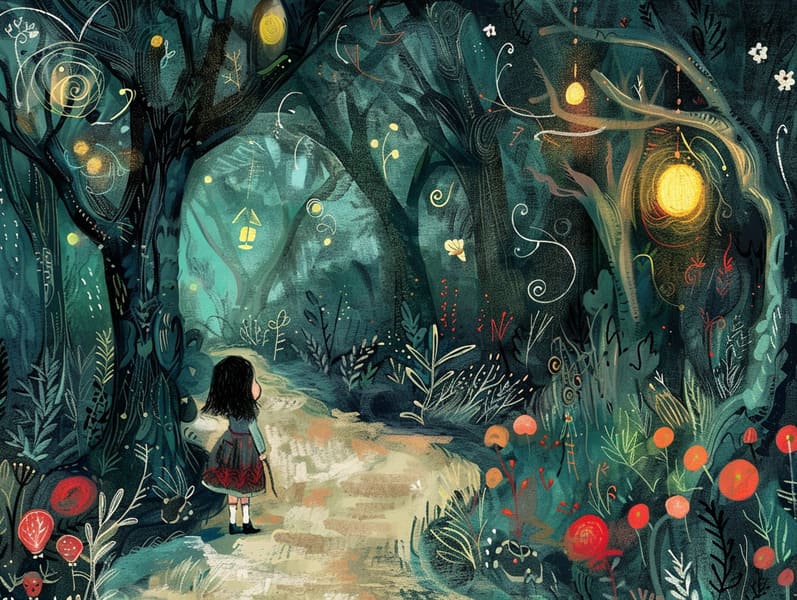Exploring the Joy of Sleepy-time Fairy Tales: Creating Valued Experiences with Your Little Ones
Exploring the Joy of Sleepy-time Fairy Tales: Creating Valued Experiences with Your Little Ones
Blog Article

The end of the day is a important time for adults and their kids. It’s a moment to ease into rest, get cozy, and enjoy the enchantment of stories.
For years, nightly tales for children have been a treasured habit, offering more than just a way to slumber. They provide an opportunity for affection, knowledge acquisition, and igniting inventiveness.
The Power of Bedtime Stories
Sleep stories for kids are more than just a way to close the day. They play a important role in a child’s evolution and in reinforcing the family bond. Here’s why they make a difference:
1. Quality Time: Sharing bedtime stories encourages a special moment of connection between families. It’s a moment of intimacy that helps children feel valued and protected.
2. Language Development: Enjoying narratives helps children develop their language acquisition. They pick up new words, understand grammar, and sharpen their attention and interpretation abilities.
3. Fantasy and Imagination: Bedtime tales transport them to enchanted worlds, nurturing creativity. They see characters, settings, and adventures, which stimulates their creative thinking.
4. Emotional Understanding: Kids' tales often showcase characters facing problems and states. These plots help kids recognize and manage their own emotions, promoting emotional skills.
5. Cognitive Skills: Engaging with a story helps children develop attention span, remembrance, and critical thinking skills. They develop to follow plots, remember components, and predict outcomes.
How to Make Bedtime Stories a Routine
Developing a night-time practice that incorporates reading narratives is manageable and gratifying. Here’s how to make it a prized part of your evening practice:
1. Find a Cozy Place: Identify a snug place where you and your child can snuggle up without disruptions. A snug bed or a snug reading nook works wonderfully.
2. Pick the Right Time: Pick a set time each night for tales. Predictability helps children be accustomed and makes the tradition more manageable.
3. Choose Age-Fitting Stories: Opt for tales that are tailored to your child’s developmental stage. Preschoolers might like visual books with easy plots, while older kids may enjoy complex plots with more detailed stories.
4. Get Involved with the Story: Ensure the tale come alive by employing different voices for characters, adding noises, and motivating your child to be involved. Ask things about the story to involve them.
5. Create a Calm Atmosphere: Lower the lights, use quiet tones, and create a relaxing environment to help your child ease into rest.
How to Discover Bedtime Stories
There are numerous sources where you can find amazing bedtime stories for children. Here are some options to try:
1. Books for Kids: Look at your closest library or bookstore to find a great selection of bedtime stories for kids. Browsing the options together can be a enjoyable activity that also gives children to decide on stories that they are drawn to.
2. Web Sources: There are many internet sites that offer free bedtime stories. Sites like children's story websites provide a variety of short stories for kids that you can get for free. These resources are great for finding new and unique stories without payment.
3. Audiobooks and Apps: For nights when you’re too worn out to read, use audiobooks or storytelling apps. These can provide a gentle reading to read your child a story, ensuring they still get their bedtime story fix. Apps often offer interactive features that can involve them further.
4. Personalized Stories: Craft your own stories fitting your child’s experiences. Personalized stories can be highly engaging and meaningful. You can include your child in the creation process, making them a part of the adventure.
The Pros of Short Stories
Compact tales for little ones are highly useful for bedtime. They provide all the good points of longer stories but are more brief, making them perfect for getting ready for bed before sleep. Here’s why short stories are a great choice:
1. Effortless to Follow: Quick stories are easy and effortless for children to follow, even after a long day. They can promptly grasp the narrative and enjoy the story without losing focus.
2. Quick Engagement: Compact stories promptly engage children, keeping their interest and interest. This makes them excellent for keeping bedtime habits simple yet enjoyable.
3. Many Choices: Brief tales make possible for variety in your bedtime stories. You can get a different story each night, keeping the routine engaging and exciting for your child.
4. Manages Time Well: For busy parents, to-the-point tales are a quick way to confirm children still get their nightly dose of storytelling. They fit well into a crowded schedule while still offering the full good aspects of website a bedtime story.
The Joy of "Read Me a Story"
The simple phrase, “Read me something,” can offer a world of magic for children. Responding to this request not only addresses a child’s request for attention and engagement but also develops lasting times. Here’s why it’s charming:
1. Link: Reading aloud to your child develops a deep emotional tie. It’s a time for proximity, sharing, and bonding.
2. Custom: Starting a bedtime story habit creates a valued tradition that children anticipate every night. It’s a routine that can be handed down through generations.
3. Development Together: As you narrate, you’ll notice your child’s development and progress. Their questions, reactions, and understanding of the stories develop, offering insights into their developing minds.
4. A Safe Haven: Bedtime stories provide a safe space for children to discover emotions, face fears, and find comfort in the recognizable presence of a parent.
Wrapping Up
Stories for kids at bedtime are a essential tool for fostering a child’s maturation and crafting unforgettable memories of closeness.